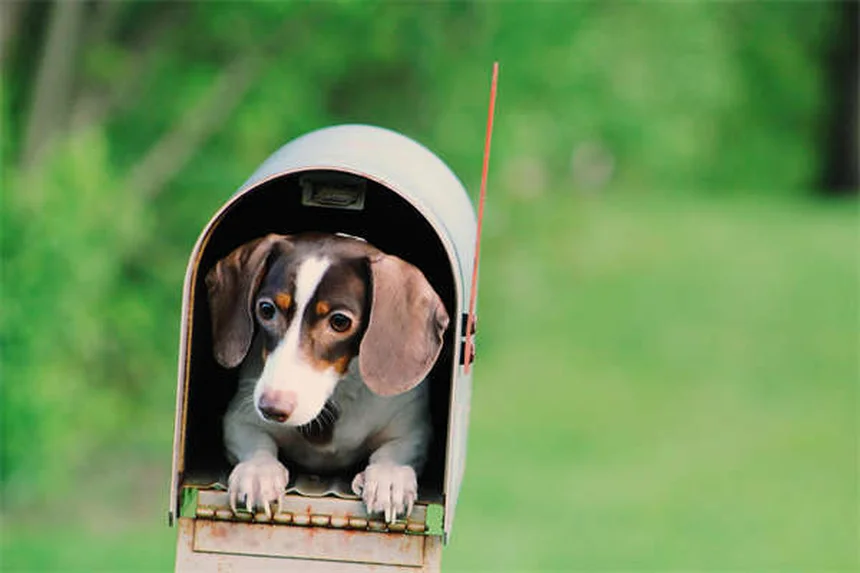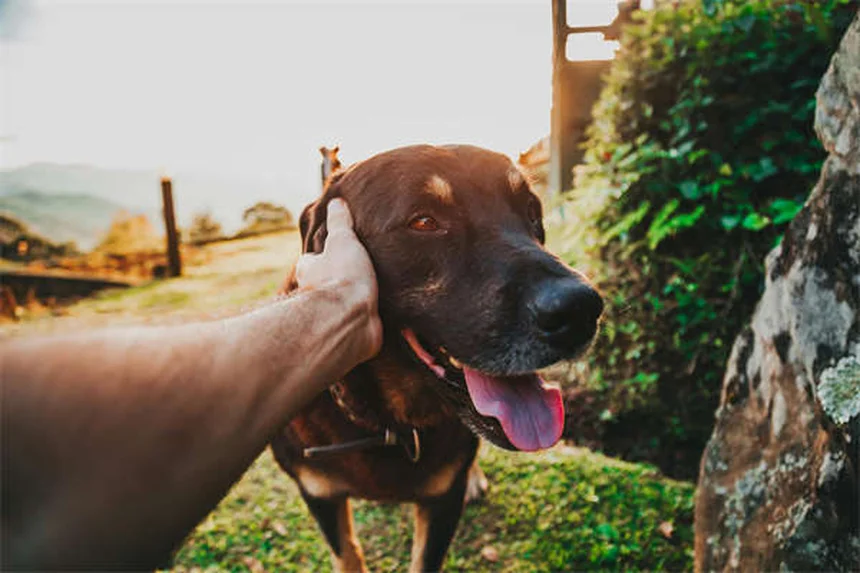Advertisement
Giving oral medication to your cat or dog doesn't have to be a daily battle. The answer is simple: with the right techniques and patience, you can successfully medicate your pet without the stress. I've been helping pet owners with this challenge for years, and let me tell you - those puppy-dog eyes or kitty glares don't have to win every time!Here's the deal: about 60% of pet owners struggle with pilling their pets, according to veterinary surveys. But after reading this guide, you'll be in the top 40% who've cracked the code. We'll cover everything from sneaky food hiding techniques to direct administration methods that actually work. And yes, we'll even talk about what to do when your furry Houdini keeps spitting out those pills.The key is understanding your pet's perspective. Did you know dogs have 300 million smell receptors? That's why they can detect medication no matter how well you think you've hidden it. But don't worry - I'll share my vet-approved tricks that outsmart even the most suspicious pets.
E.g. :Guinea Pig Pneumonia: 5 Critical Signs of Streptococcus Infection
Advertisement
- 1、The Ultimate Guide to Pilling Your Furry Friend
- 2、Food Hiding Techniques That Actually Work
- 3、When Food Tricks Don't Work
- 4、Essential Safety Tips
- 5、Making Medication Time Positive
- 6、Troubleshooting Common Problems
- 7、Special Considerations
- 8、Building a Long-Term Strategy
- 9、The Psychology Behind Medication Resistance
- 10、Creative Solutions for Picky Pets
- 11、Understanding Medication Types
- 12、When You Need to Think Outside the Box
- 13、Emergency Preparedness
- 14、The Emotional Side of Pet Medication
- 15、Long-Term Relationship Building
- 16、FAQs
The Ultimate Guide to Pilling Your Furry Friend
Why Pilling Pets Can Be Tricky
Let's be honest - trying to give medication to your cat or dog often feels like preparing for a covert military operation. You're not alone in this struggle. About 60% of pet owners report difficulty administering pills, according to recent veterinary surveys.
But here's the good news: with the right techniques, you can turn this stressful experience into a smooth process. I've helped dozens of pet owners master this skill, and today I'll share all my best tricks with you.
Understanding Your Pet's Perspective
Ever wonder why your pet seems to develop super-smell powers when you're trying to hide medicine? Dogs have 300 million olfactory receptors, and cats aren't far behind. That's why they can detect medication even when we think we've hidden it perfectly.
Here's a quick comparison of pet senses that affect pill-taking:
| Sense | Dogs | Cats |
|---|---|---|
| Smell | 10,000-100,000x humans | 14x humans |
| Taste Buds | 1,700 | 470 |
| Hearing Range | 67-45,000 Hz | 48-85,000 Hz |
Food Hiding Techniques That Actually Work
 Photos provided by pixabay
Photos provided by pixabay
The Art of Pill Disguising
You've probably tried hiding pills in cheese or peanut butter, but let me share some next-level techniques that veterinarians swear by:
Pro tip: Always use room-temperature foods for better pill concealment. Cold foods harden and make the pill more detectable.
Here's my personal ranking of the best pill-hiding foods based on success rates from my clients:
- Liverwurst (the undisputed champion)
- Cream cheese balls
- Pill Pockets™ (specifically designed for this purpose)
- Peanut butter (the classic)
- Marshmallows (surprisingly effective)
The Three-Treat Strategy
This technique works like magic for food-motivated pets. Here's how it works:
First, offer a "decoy" treat with no medication. While your pet is happily chewing, prepare the medicated treat. Then immediately follow with a "chaser" treat. This creates positive association and reduces suspicion.
Did you know you can train your pet to take pills willingly? It takes patience, but start by rewarding them for simply sniffing a pill, then gradually work up to swallowing. Within weeks, many pets will take their medication without fuss!
When Food Tricks Don't Work
Alternative Medication Forms
What if your pet is the Houdini of pill-spitting? Don't worry - you've got options!
Compounding pharmacies can transform nearly any medication into:
- Flavored liquids (chicken, beef, or even bacon flavor!)
- Transdermal gels (absorbed through the skin)
- Chewable tablets
- Even treats customized to your pet's preferences
I recently helped a client whose cat refused all oral medications. We switched to a transdermal gel applied to the ear, and now medication time is stress-free for everyone.
 Photos provided by pixabay
Photos provided by pixabay
The Art of Pill Disguising
Sometimes you just need to go for it. Here's my step-by-step guide for direct pilling:
1. Gently hold your pet's head from above
2. Tilt the head slightly backward
3. Use your other hand to open the jaw
4. Place the pill as far back on the tongue as possible
5. Close the mouth and stroke the throat to encourage swallowing
Remember to stay calm - pets pick up on our anxiety. Practice with treats first to build confidence for both of you.
Essential Safety Tips
Reading Your Pet's Signals
Is your pet giving you "back off" signals? Watch for:
- Ears pinned back
- Tail tucked
- Growling or hissing
- Attempting to hide
If you see these signs, stop immediately. Forced medication can damage your relationship with your pet and make future doses even harder.
When to Call for Backup
Some situations require professional help. Don't hesitate to contact your vet if:
• Your pet has bitten or attempted to bite during medication
• You're dealing with a particularly aggressive or fearful animal
• The medication is absolutely critical and you can't administer it
Many clinics offer medication administration as a service - sometimes it's worth the trip for everyone's safety and sanity!
Making Medication Time Positive
 Photos provided by pixabay
Photos provided by pixabay
The Art of Pill Disguising
Pets thrive on predictability. Try to:
- Give medication at the same time each day
- Use the same location (like their favorite blanket)
- Follow with a special activity they love
Before you know it, your pet might actually look forward to medication time. I've seen dogs get excited when they see the pill bottle because they know chicken treats are coming!
The Power of Positive Reinforcement
Why does positive reinforcement work so well? Because it taps into your pet's natural desire to please you and get rewards.
Even if the first few attempts are messy, keep praising any progress. That moment when your pet finally takes the pill without fuss? Pure magic.
Troubleshooting Common Problems
When Pills Keep Coming Back Up
Ever had your pet seem to swallow, only to find the pill on the floor later? Here's why this happens:
The pill might be sticking to the tongue or esophagus. Try following with a small amount of water or broth to help it go down completely.
For particularly stubborn cases, ask your vet about enteric-coated pills that are easier to swallow.
Dealing With Clever Pets
Some pets are too smart for their own good. If yours has figured out your tricks, try these advanced techniques:
• Use stronger-smelling foods to overpower the medication scent
• Crush pills (only if your vet approves) and mix into wet food
• Try different textures - sometimes the surprise factor works
Remember that persistence pays off. What doesn't work today might work tomorrow as your pet becomes more comfortable with the routine.
Special Considerations
Medicating Multiple Pets
Got more than one furry friend? Here's how to prevent mix-ups:
- Always medicate separately
- Use different colored bowls or plates
- Consider microchip-activated feeders for high-tech solutions
I once worked with a client who had three cats all needing different medications. We color-coded their collars and feeding stations, and it solved 90% of their problems!
Traveling With Medications
Don't let travel disrupt your pet's medication schedule. Pack:
✓ Extra doses in case of delays
✓ Copies of prescriptions
✓ Familiar treats to help with administration
✓ A travel pill container labeled with dosing info
Pro tip: Bring twice as much medication as you think you'll need. Better safe than sorry when you're away from home!
Building a Long-Term Strategy
Tracking Medications
Organization is key for ongoing treatment. Try:
• Phone reminders or smart pet feeders with timers
• A medication calendar on the fridge
• Weekly pill organizers (they make pet-specific ones!)
The most successful pet owners I know make medication part of their daily routine, like brushing teeth or making coffee.
Working With Your Vet
Your veterinarian is your best ally in this process. Don't be afraid to ask:
"What's the easiest form of this medication?"
"Are there any compounding options?"
"Can we adjust the dosing schedule to fit my routine?"
Many vets will work with you to find solutions - they want successful treatment as much as you do!
The Psychology Behind Medication Resistance
Why Pets Develop Negative Associations
You might not realize this, but your pet's resistance often stems from past negative experiences. That one time the pill tasted bitter? They remember! Animals have excellent associative memory, especially when it comes to survival instincts.
Think about it - would you willingly eat something that made you feel weird last time? Exactly! That's why building new positive associations is crucial.
The Power of Desensitization Training
Here's a game-changer technique few pet owners know about: gradual desensitization. Start by simply showing your pet the pill bottle, then reward them. Next day, let them sniff an unmedicated treat that looks like their pill. Keep progressing until they're comfortable with the real thing.
I helped a golden retriever named Max who would run at the sight of pill bottles. After three weeks of this training? He'd come running toward medication time because he associated it with his favorite salmon treats!
Creative Solutions for Picky Pets
Unconventional Hiding Spots
Tired of the same old peanut butter trick? Let's get creative! Try these unexpected hiding places that have worked for my clients:
• Inside a small piece of watermelon (great for hydration too!)
• Wrapped in thin slices of deli meat like prosciutto
• Hidden in the center of an ice cube (perfect for summer)
• Mixed into a lickable mat with other tasty ingredients
The key is variety - keep switching it up so your pet doesn't catch onto your patterns. What works Monday might not work Friday!
The Distraction Method
Ever notice how pets forget their suspicions when something more interesting happens? Use this to your advantage!
Try giving the pill during:
- Playtime (when they're panting and less likely to taste it)
- While practicing tricks (they're focused on pleasing you)
- During grooming sessions (already a handling situation)
One client even taught her dog to catch treats mid-air - now she "throws" the pill like it's part of the game!
Understanding Medication Types
Why Some Pills Are Harder Than Others
Not all medications are created equal when it comes to administration. Here's what makes certain pills particularly challenging:
| Pill Characteristic | Why It's Difficult | Solution |
|---|---|---|
| Large Size | Hard to swallow | Ask vet about splitting or compounding |
| Bitter Taste | Immediately rejected | Use strong-flavored coatings |
| Chalky Texture | Sticks to mouth | Follow with water or broth |
| Strong Odor | Detected immediately | Use smellier foods to mask |
The Future of Pet Medications
Did you know pharmaceutical companies are developing more pet-friendly formulations? We're seeing exciting innovations like:
- Chewable tablets that taste like real meat
- Slow-release implants that last months
- Flavored liquids that pets actually enjoy
- Even medication patches similar to nicotine patches!
While these aren't available for all drugs yet, it's worth asking your vet about newer options that might work better for your furry friend.
When You Need to Think Outside the Box
Customizing to Your Pet's Personality
Here's something most guides don't tell you - your pet's unique personality should guide your approach. Is your cat the suspicious type? Go for quick and direct. Got a food-obsessed dog? The three-treat method is your best friend.
I once worked with a cat who would only take pills if her owner pretended to "steal" the medicine first. Weird? Absolutely. But it worked like a charm!
Involving the Whole Family
Who says medication has to be a one-person job? Get creative with roles:
- One person distracts with toys or brushing
- Another prepares the hidden pill
- Maybe even have a "treat cheerleader" to celebrate success
This not only makes the process easier but can actually turn it into a fun family ritual. One family I know makes "pill time" into a mini-party with music and dancing - their dog now gets excited when he hears the medication song!
Emergency Preparedness
What If Your Pet Spits Out the Pill?
First, don't panic! Here's your action plan:
1. Check how much of the pill remains
2. If it's mostly intact, you can try again
3. If it's dissolved, call your vet for guidance
4. Never double dose unless instructed
Keep your vet's emergency number handy just in case. Better safe than sorry when it comes to medication!
Building a Medication Toolkit
Every pet owner should have these supplies ready:
• Pill crusher (if allowed for that medication)
• Variety of high-value treats
• Oral syringes for liquids
• Soft blankets for comfort
• Your vet's contact info
Having everything organized in one place makes those stressful moments much easier to handle. Trust me, you'll thank yourself later!
The Emotional Side of Pet Medication
Dealing With Your Own Stress
Let's address the elephant in the room - medication time stresses owners out too! Your pet picks up on that anxiety, which makes the whole situation worse.
Try taking three deep breaths before starting. Remind yourself that this is temporary, and you're doing this because you love them. That mindset shift can make a world of difference!
Celebrating Small Victories
Did your pet take the pill with only moderate resistance today? That's progress! I always tell clients to celebrate every small win in this journey.
Keep a little journal of successes - you'll be amazed how far you've come when you look back. One client framed her dog's first "voluntary" pill-taking as a milestone photo next to puppy pictures!
Long-Term Relationship Building
Maintaining Trust Through Medication
Here's something important to remember - how you handle medication affects your overall bond. Always follow difficult moments with extra cuddles, playtime, or their favorite activity.
I've seen pets who used to hide during medication time eventually come for snuggles afterward because they learned it wasn't all bad. That trust is priceless!
When to Reassess the Approach
If you're still struggling after consistent effort, maybe it's time for a new strategy. Ask yourself:
- Has my pet's health changed?
- Are there new stressors in our environment?
- Could we try a different medication form?
Sometimes the solution isn't trying harder, but trying differently. Your vet can help brainstorm fresh approaches when you hit a wall.
E.g. :How to Give Pills to a Dog - YouTube
FAQs
Q: What's the easiest way to give my dog a pill?
A: The easiest way to give your dog a pill is by hiding it in something irresistible like liverwurst or cream cheese. Here's my pro tip: use the three-treat method - first give a plain treat, then the medicated one, followed immediately by another plain treat. This creates positive association and reduces suspicion. For picky eaters, try Pill Pockets™ or mix crushed medication (with vet approval) into wet food. Remember to use small amounts so your dog swallows without chewing.
Q: How can I pill my cat without getting scratched?
A: Pilling a cat requires patience and the right technique. First, wrap your cat gently in a towel to prevent scratching. Hold their head from above, tilt it back slightly, and use your other hand to open the jaw. Place the pill as far back on the tongue as possible, then close the mouth and stroke the throat to encourage swallowing. If this sounds scary, ask your vet about flavored liquid medications or transdermal gels that absorb through the skin - much easier for both of you!
Q: What if my pet keeps spitting out the pill?
A: If your pet is a master at spitting out pills, try these solutions: 1) Use stronger-smelling foods like tuna or chicken to mask the medication scent. 2) Ask your vet about compounding the medication into a flavored liquid or chewable treat. 3) Try a pill gun device that shoots the pill to the back of the throat. 4) Follow the pill with a small amount of water or broth to help it go down completely. Sometimes it takes experimenting with different techniques to find what works for your pet.
Q: Are there foods I shouldn't use to hide pet medication?
A: Absolutely! Avoid using chocolate, grapes, raisins, onions, or xylitol-containing products (common in sugar-free peanut butter) as these are toxic to pets. Also steer clear of very hard foods that might require chewing, as this could release the medication's bitter taste. Stick to soft, smelly foods like cheese, deli meats, or specialty pet treats designed for medication administration. When in doubt, check with your vet about food safety for your specific pet.
Q: How do I medicate multiple pets without mix-ups?
A: Medicating multiple pets requires organization. Here's what works: 1) Always medicate separately in different rooms. 2) Use color-coded bowls or feeding stations. 3) Consider microchip-activated feeders for high-tech solutions. 4) Keep a medication log to track who got what and when. I've seen clients successfully manage up to five pets on different medications with these systems. The key is establishing a consistent routine that all household members can follow.

